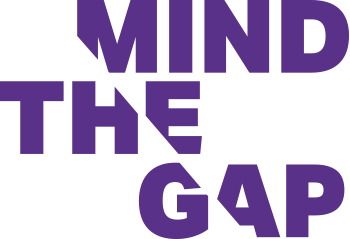Mind the Gap is inspired by and dedicated to Franco Basaglia, the Italian psychiatrist who authored the eponymous law (known as Basaglia law or Law 180) and promoted the closing of psychiatric hospitals.
Moreover, the project also aims at reinforcing participatory cultural processes over the years and through multiple actions. As Franco Basaglia once affirmed, art and culture can become devices to engage both the places and the interactions these places host.
––––
SEVENTH EDITION, 2023
The seventh edition of the Mind the Gap project revolves around a video and film exploration of gesturality. As we know, our body is not immutable; it is constantly marked not only by the passing of time, but also by its surrounding cultural, social, and economic models. This implies that the body is an actor, in the etymological sense of the term; that is, it actively and directly participates in what happens, it is the tool through which the subject exists in the world. The body is the margin or threshold of humans’ shared experience of being, it is deeply relational in a constant dynamic between I and we, and in this sense, it is also highly political.
Curated by Giada Centazzo, Lorenzo Lazzari and Rachele D’Osualdo (Associazione Culturale ETRARTE)
Go to website »
Download catalogue »
––––
SIXTH EDITION, 2022
The sixth edition of the contemporary art project Mind the Gap investigates space by questioning the concept of it as a mere physical container wherein events are shaped. In the works of the invited artists space becomes a memory that is activated by a system of objects, thus working as a record of events, as the manifestation of inner motions and deep questions of identity, and as a metaphor for social and cultural changes , as well as the catalyst for political and economical transformations on various territorial scales.
Curated by Giada Centazzo, Lorenzo Lazzari and Rachele D’Osualdo (Associazione Culturale ETRARTE)
Go to website »
Download catalogue »
––––
FIFTH EDITION, 2021
The fifth edition of Mind the Gap revolves around the topic of the uncanny, that is, a signifier moving along the threshold between what is known and unknown, what is familiar and what is alien. The invited artists move along a border line which explores the breaking of meaning of what we define as identity, investigating the relationship between normality and diversity, human and animal, feral instincts and control, and animated and inanimate.
Curated by Giada Centazzo with Lorenzo Lazzari and Rachele D’Osualdo (Associazione Culturale ETRARTE)
Go to website »
Download catalogue »
––––
FOURTH EDITION, 2020
The core of the fourth edition of Mind the gap is the topic of the limen, a border that is not a limit but a threshold. The concept was dear to Basaglia, whose medical and intellectual thought moved across the uncertain borders of psychiatry: a very complex form of knowledge, constantly opening up to theoretical and practical questions, as well as psychiatric, philosophical, social and cultural ones. By embracing the theory of the border, the invited artists question the threshold established at the verge of the question What is an ‘individual’? What is a ‘body’?, between nature and culture.
Curated by Giada Centazzo, Bruno Di Marino, Rachele D’Osualdo
Go to website »
Download catalogue »
––––
THIRD EDITION, 2019
The third edition of Mind the Gap, entitled Recalculating. Computing territories and their analog actuators, is focuses on technological infrastructures and the relationship between people and technology, investigated through works by artists Sofia Braga, Emilio Vavarella and KairUs, a collective of two artists – Linda Kronman and Andreas Zingerle.
Curated by Davide Bevilacqua
Go to website »
Download catalogue »
––––
SECOND EDITION, 2018
Mind the Gap is a project of Christian Fogarolli conceived for Parco Basaglia, the place where in 1961 the homonymous Italian psychiatrist started his own therapeutic (and social) revolution. The title of the exhibition – a clear pun between the terms “mind” (brain, memory, sanity) and “gap” (discrepancy, breach, difference) – focuses on diversity as a value worth considering and aims at shedding light on contemporary art as something able to rethink the traditional destination of the places involved and equally able to debunk preconceptions and prejudices that too often still afflict the world of mental health.
Curated by Giorgia Gastaldon
––––
FIRST EDITION, 2017
Labrys is a project of contemporary art, diffused in time and space. Labrys is a project, divided into nine parts created by visual artist Maria Rebecca Ballestra, and loosely based on the writings by Julien Friedler, The Truth of the Labyrinth. The aim of each stage is to investigate the meaning of the object “labyrinth” by unfolding every time a different symbolism.
Curated by Giorgia Gastaldon
